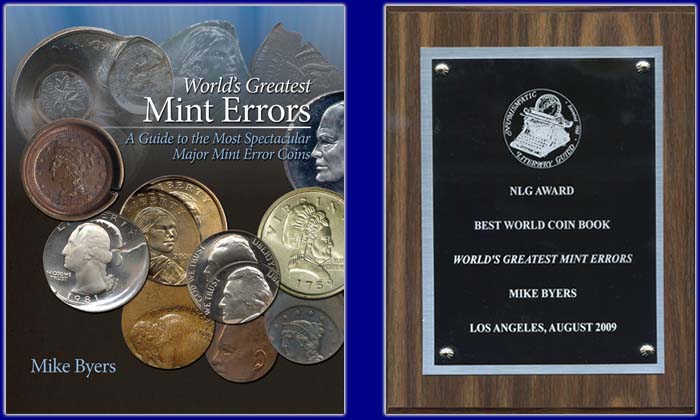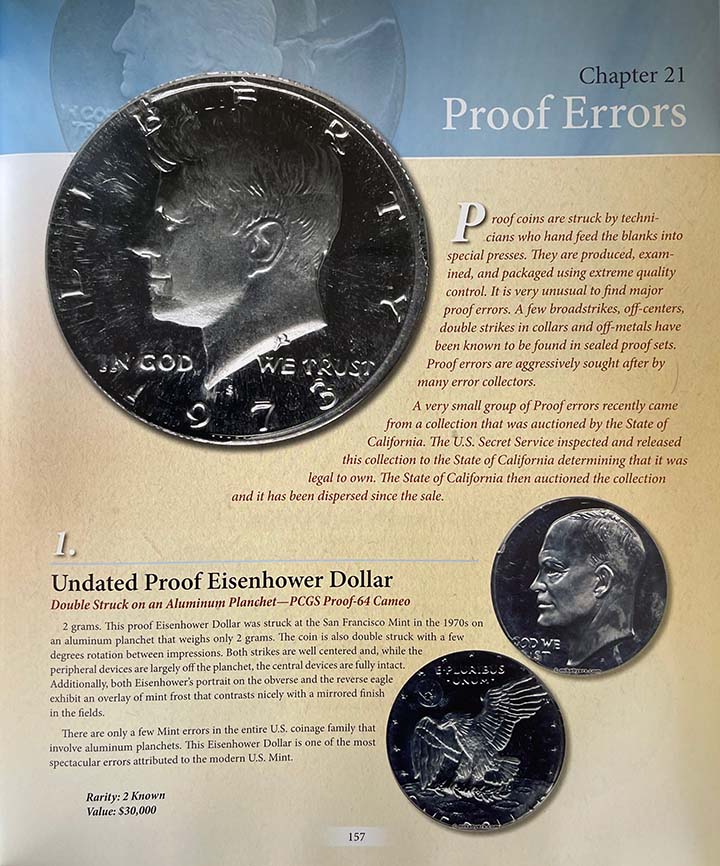Proof 1776-1976 S Bicentennial Quarter
Overstruck on 1967 Roosevelt Dime
Double Denomination & Dual Date
NGC PF 67
UNIQUE
SOLD
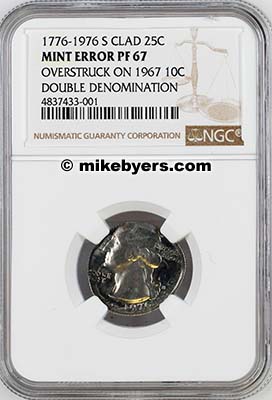
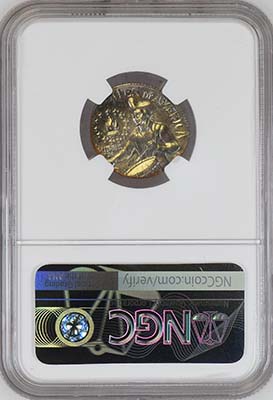
This is the only known proof Bicentennial Quarter struck over a Roosevelt Dime. In addition, it is a "dual date" since the dime is dated 1967, an amazing 9 years apart!
The 1976 Proof Bicentennial Quarters were struck at the San Francisco Mint. The 1967 Dimes do not have a mint mark since they were struck at several U.S. Mints. Struck as circulating coinage in 1967 at the Philadelphia and Denver Mints, and struck as special specimen coins (SMS) to be included in the Special Mint Sets in San Francisco at the Mint.
Since no Mint Mark designates which U.S. Mint struck the 1967 U.S. Dimes, the only way to determine if this 1967 Dime was struck in San Francisco would be the special surface and strike on the SMS Dimes. Since this Dime was overstruck by proof quarter dies for the 1976 Bicentennial Quarter, no determination can be made.
1976 Bicentennial off-metal mint errors are very rare in every denomination struck for circulation. In proof, they are prohibitively rare with only 4 proof Bicentennial off-metal double denominations known on any denomination. There are (2) Bicentennial proof quarters struck over struck cents known, a Bicentennial proof quarter double struck on a struck dime and this just discovered and unique 1976-S Bicentennial quarter struck over a struck 1967 dime.
For comparison purposes, in a Heritage auction, a NGC Mint State 64 Bicentennial Quarter on a Dime blank sold for $6,900. Also in a Heritage auction, a Bicentennial quarter struck on a struck Dime in PCGS Mint State 62, sold for $9,200.
Proof coins are struck by technicians who hand feed the blanks into special presses. They are produced, examined and packaged using extreme quality control. It is very unusual to find major proof errors. A few broadstrikes, off-centers, double strikes (in collar) and off-metals have been known to be found in sealed proof sets. Proof errors are aggressively sought after by many error collectors.
This unique mint error offered here was just discovered and was authenticated and certified Proof 67 by NGC. It is unique and is a significant discovery for several important reasons. It is the only known Bicentennial quarter struck over a struck dime in proof. It is also a "dual date" Bicentennial 1976-S quarter overstruck on a 1967 dime, 9 years apart. It was either struck in Philadelphia or Denver for circulation or San Francisco on a specially prepared SMS planchet.
It was preserved in amazing condition with considerable detail remaining on both the obverse and reverse. The obverse design of the dime is mostly visible underneath the design of the obverse design of the quarter. The full date 1967 is clearly visible giving it a remarkable and dramatic look of the dual date 1976-S and 1967.
This discovery mint error is fascinating since it combines rarity (unique), quality (Proof 67), history (Bicentennial one year only design), intrigue (either struck in Philadelphia or Denver for circulation or in San Francisco as SMS) and mystery (9 years apart). This enigmatic and unique U.S. proof mint error belongs in a major collection of the finest error coins or in a collection of Bicentennial coins.
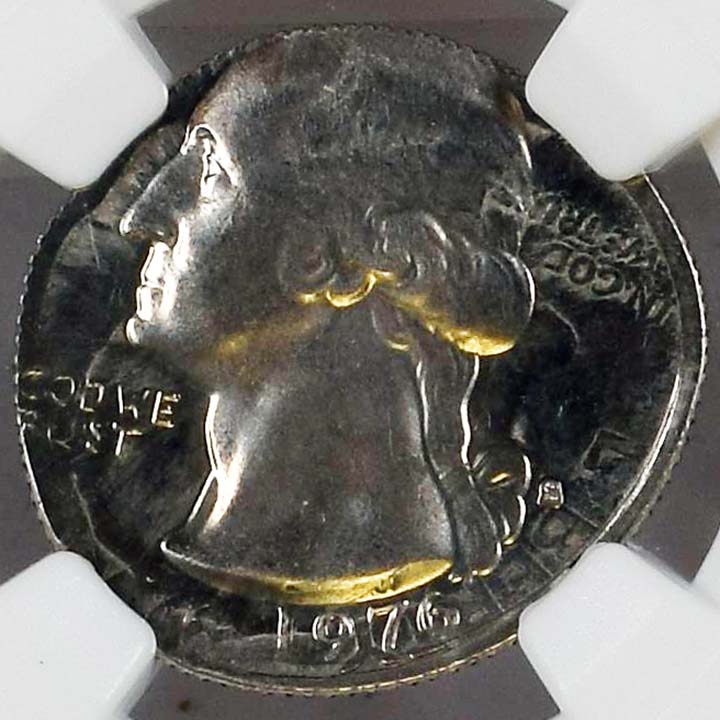
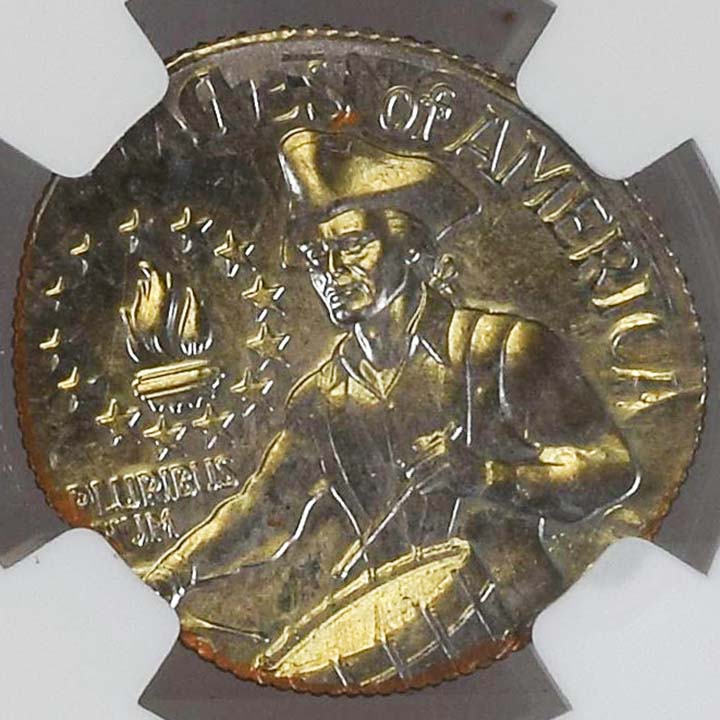
Below is a 1967 Roosevelt Dime image
transposed on this mint error:
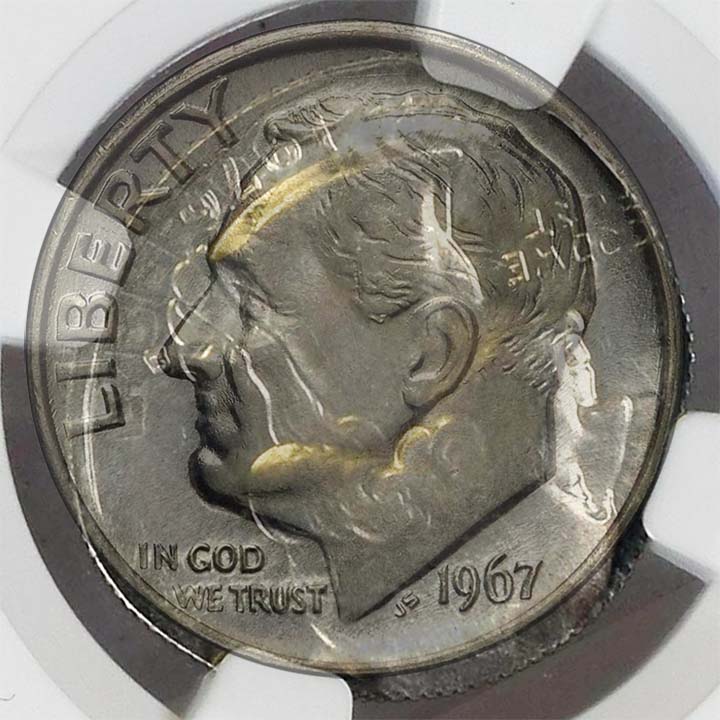
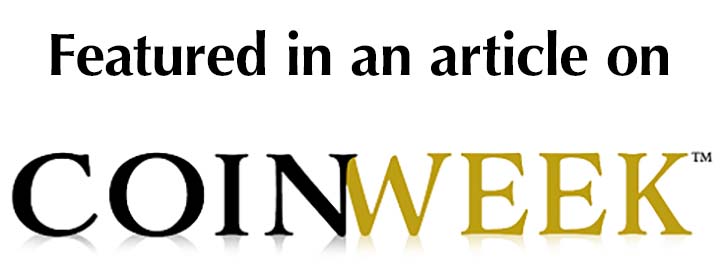
Also for comparison, below are the two famous and enigmatic Washington Quarters from the San Francisco Mint struck in Proof, over a U.S. Silver Barber Quarter (1892-1916) and over a 1941 Canada Silver Quarter. These were both featured in a TV interview I did with Fox News. These fascinating errors went "viral" and were featured in USA Today, London's Daily Mail, AP News, Coin Week, New York Post, Newsmax, NBC News, Numismatic News, Time Magazine and on Maria Bartiromo's TV show.
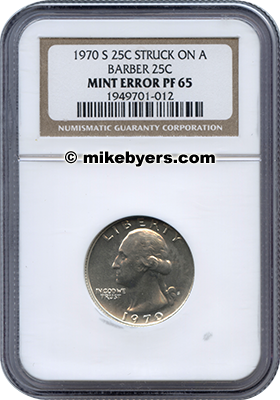
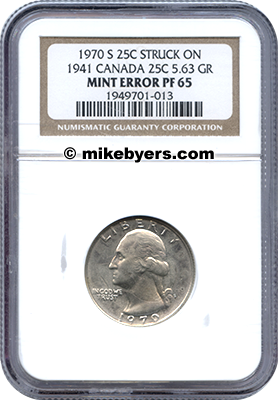
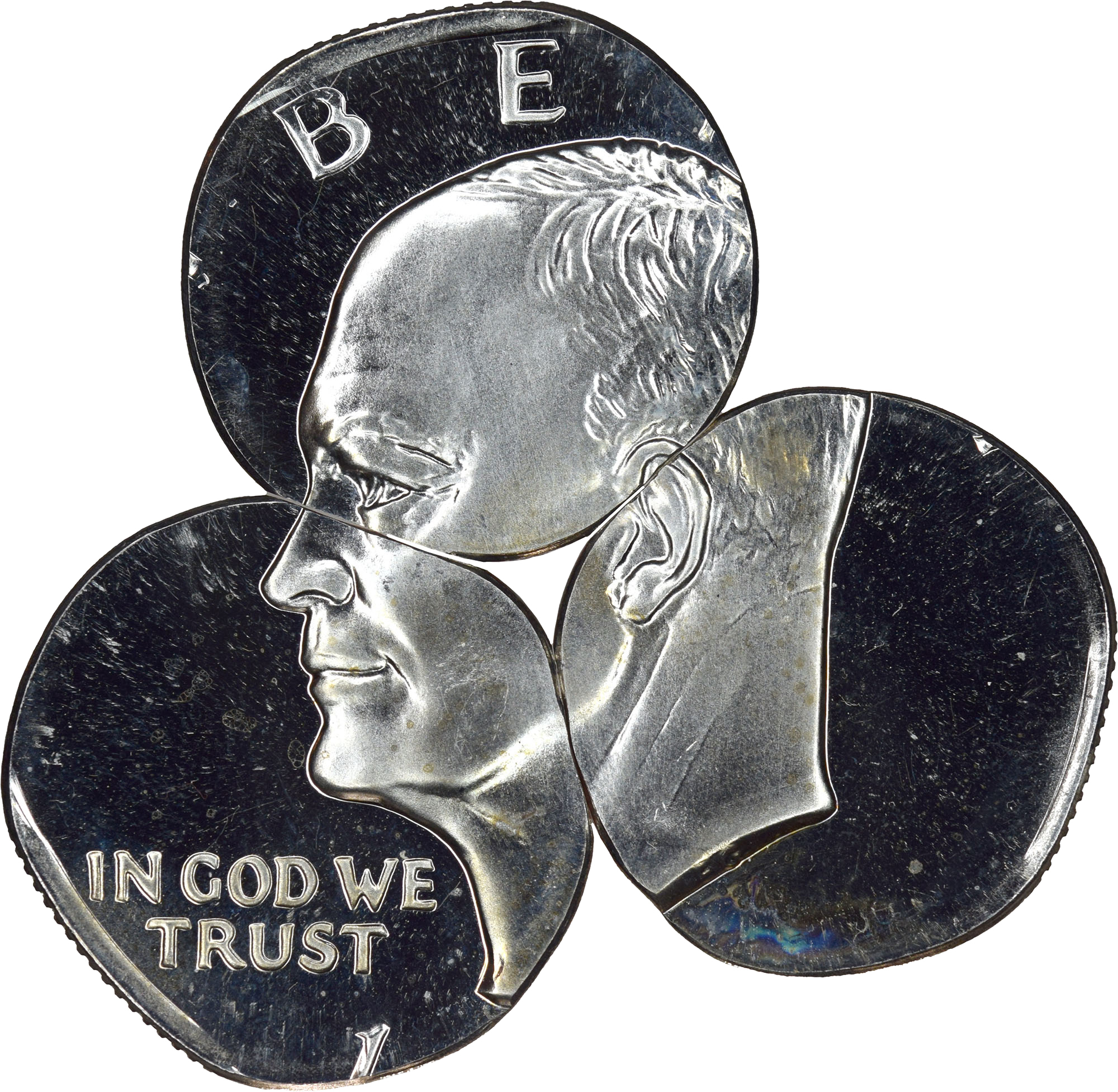 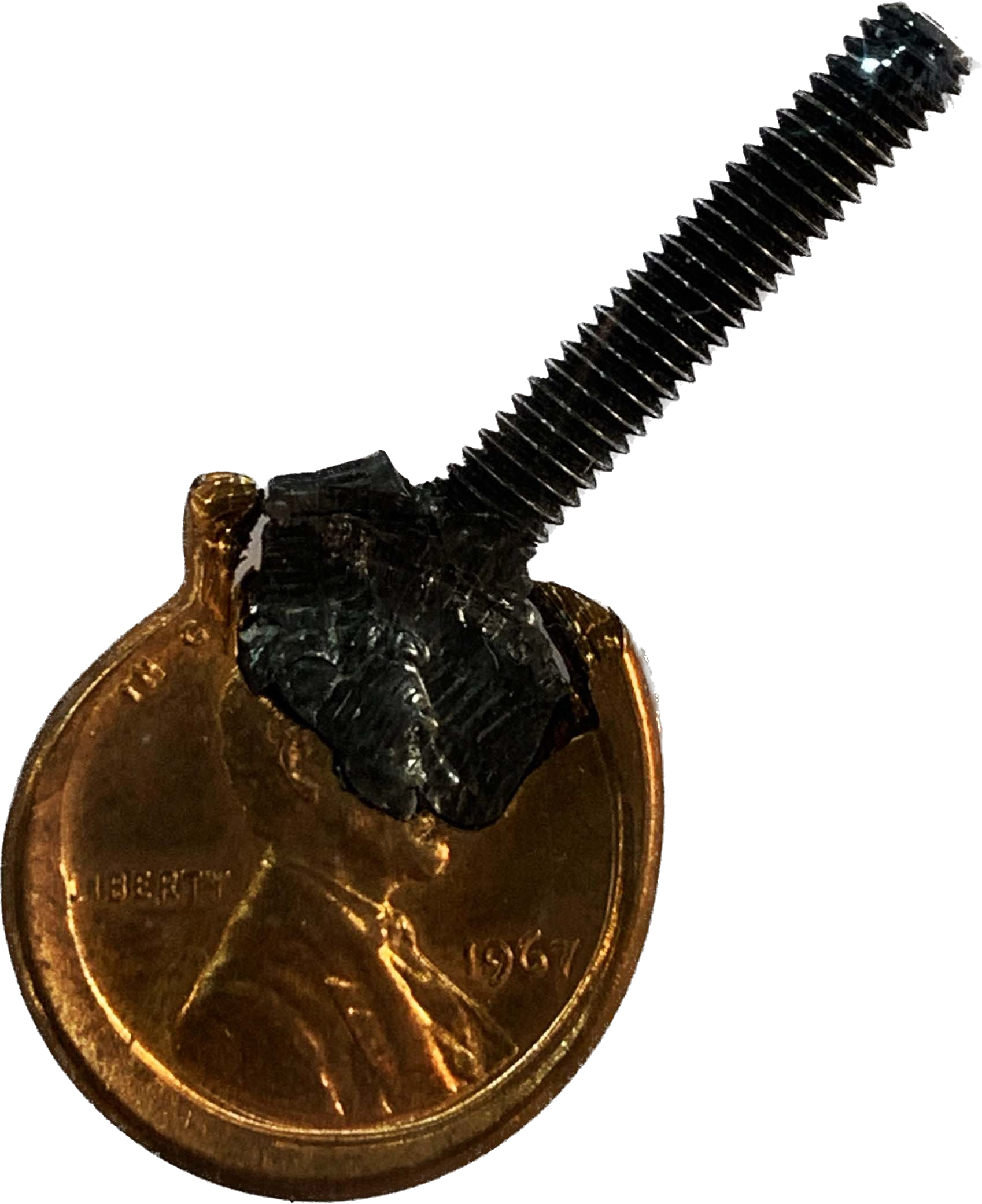 Intentional ErrorsIn the early 2000's, a group of several hundred U.S. error coins were found in a safe-deposit box. Fred Weinberg purchased this group which included coins struck for proof sets and also coins struck for circulation. This group was auctioned by the California State Controller's Office of Unclaimed Property. The U.S. Secret Service inspected and released this collection to the State of California determining that it was legal to own. The State of California then auctioned the collection and the rest is history. Another example of U.S. error coins escaping the Mint occurred in the 1970's. A hoard of proof error coins were smuggled out of the San Francisco Mint inside the oil pans of forklifts that were being serviced outside of the Mint. This topic was discussed in the June 6, 2022 Issue of Coin World, which covered Fred Weinberg's account of this story. The Coin World Managing Editor concluded: Obviously, the marketplace accepts these coins, and some collectors are happy paying thousands of dollars for coins that show every indication of having been created through illegal means. In Episode 11 of the PCGS video series Slab Lab, Seth Chandler interviews Fred Weinberg. In part 2 of the interview, Fred explains in detail why mint errors that are decades old are not recovered by the U.S. Mint. Fred's recollection of conversations in his office with the Chief of the U.S. Mint Police are extremely insightful and explain why the Mint doesn't attempt to recover error coins from decades ago. |
Proof Errors are featured in chapter 21 of my
NLG Award winning book, World's Greatest Mint Errors:
